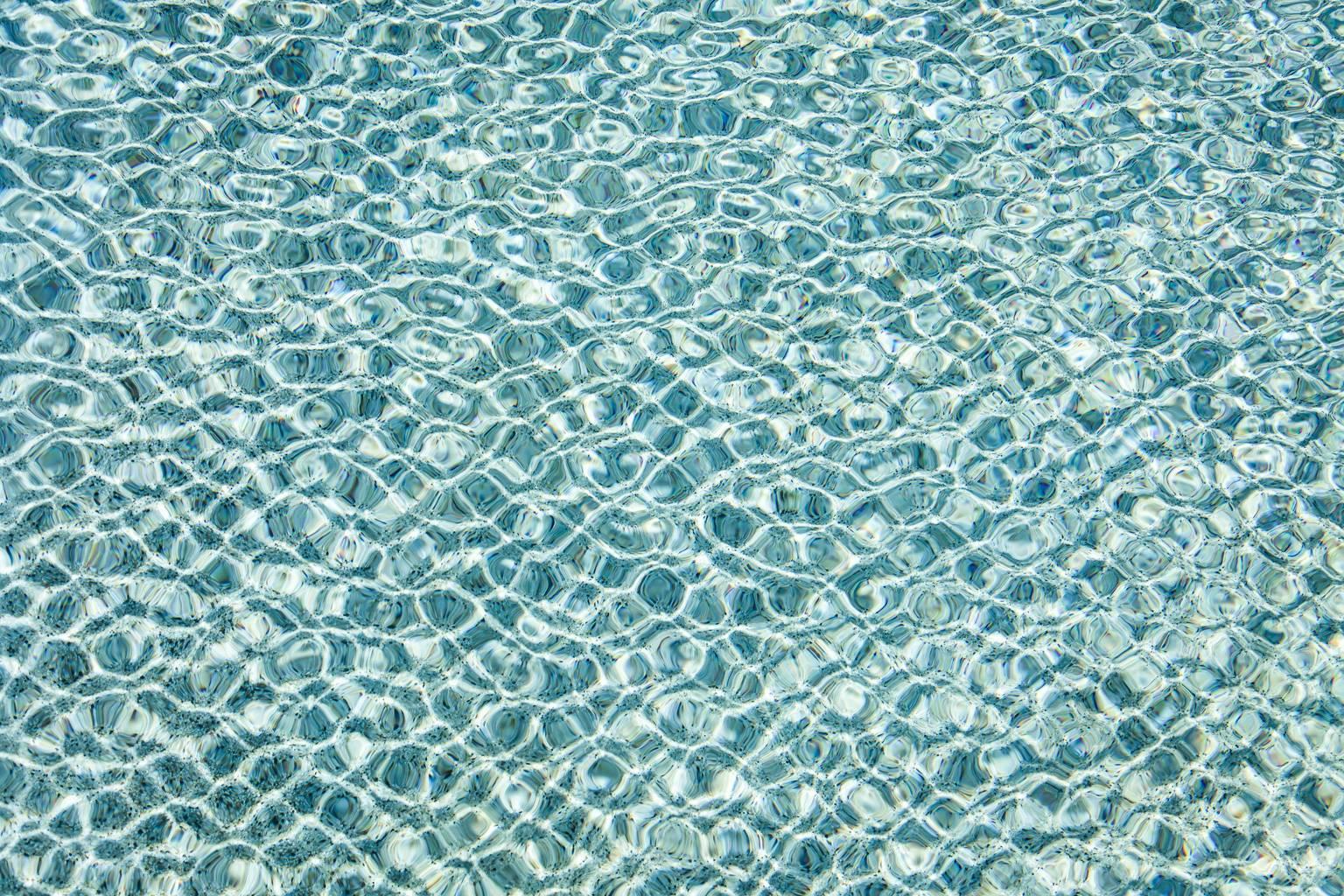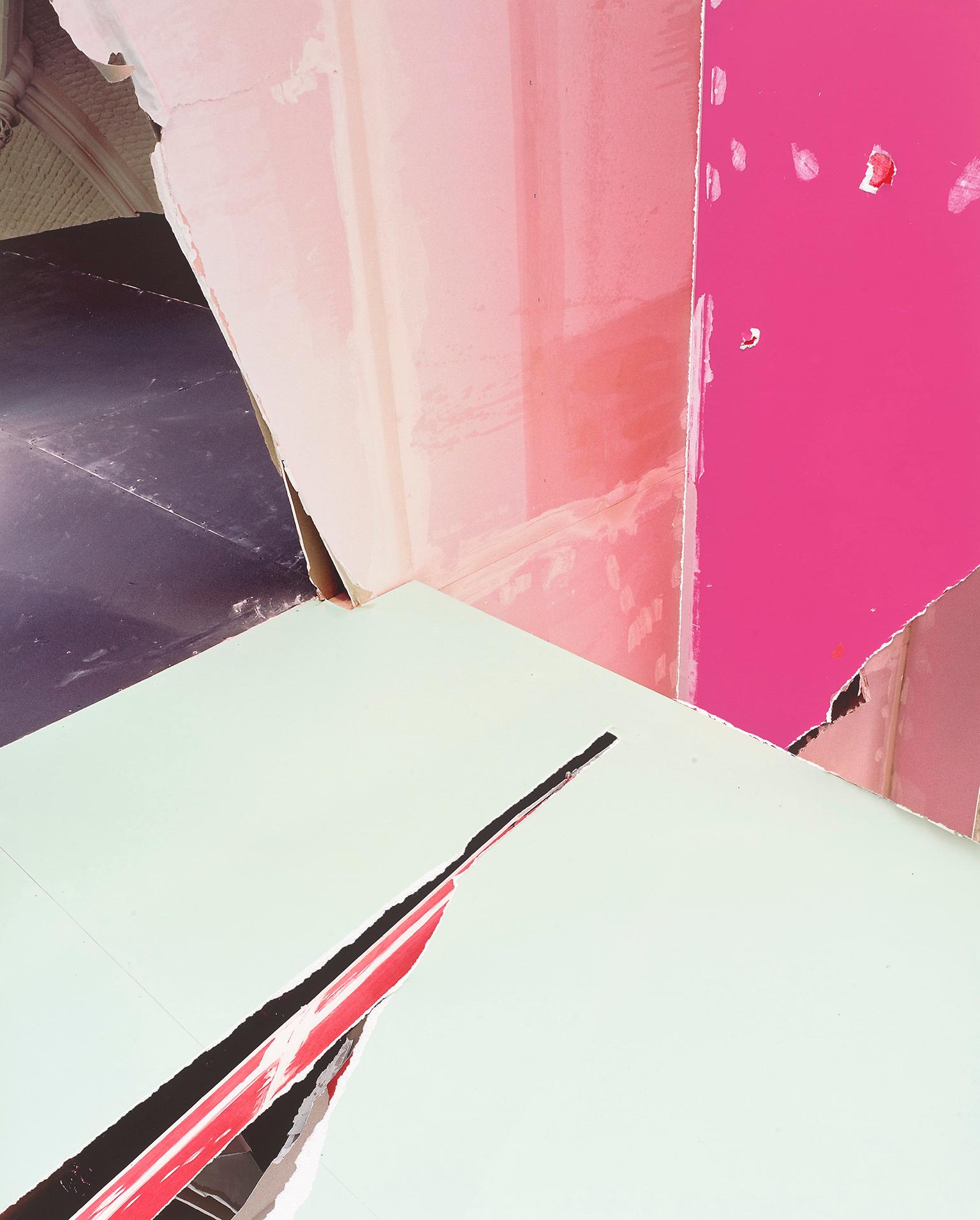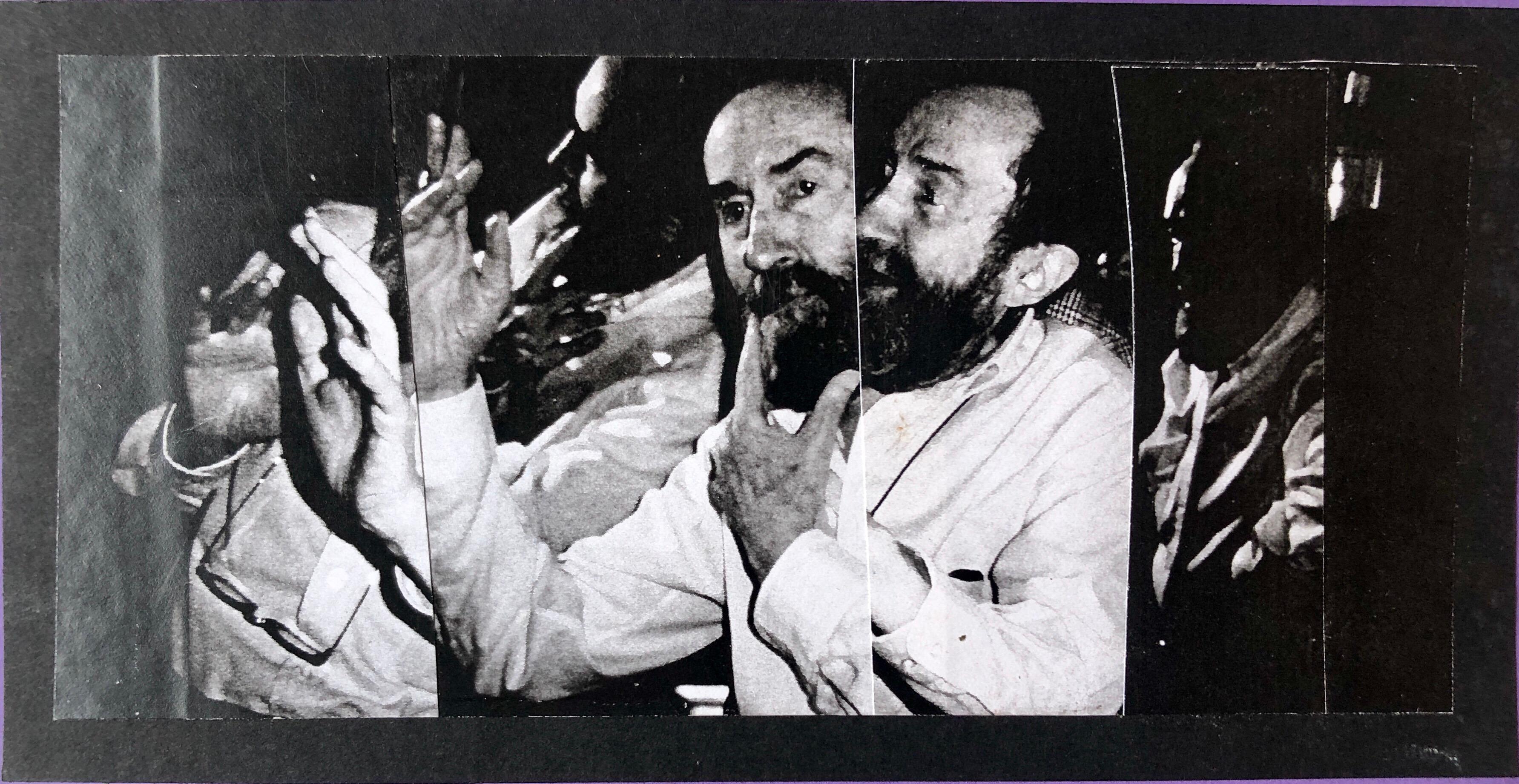Items Similar to Blue Circle with Red Ring
Want more images or videos?
Request additional images or videos from the seller
1 of 9
Ruth AdlerBlue Circle with Red Ring
About the Item
ABOUT THIS PIECE: Color is the foundation of my work. My circles start as a mood or idea that eventually evolves into a colored circle. I am curious how different colours interact when they're placed next to each other. I experiment with intensity of colours and the different sensations colours evoke. Why a Circle? When I explore my fascination with this shape I discover that the circle represents all that is familiar and comforting. It is the shape of the rising sun, of a mother's nipple, of the iris of the eye, and of a full moon. I use the latest digital technology as a medium to create my circles.
ABOUT THIS ARTIST: Ruth Adler is a Canadian artist whose mediums include paintings, works on paper, animated films and textiles. She is inspired by the city of Tel Aviv, music (she plays the harmonica) and her personal memories. Jim Kempner Fine Art represents her work in New York and the Lonsdale Gallery represents her in Toronto.
PACKAGING: 30x40" and 40x60" prints are shipped in a special fortified tube to guard against bending or damage. Framed 30x40" prints are shipped via FedEx in a bespoke cardboard box with a fitted interior armature for the frame. We do not frame the extra large, 40x60" print sizes because they are too large to ship without risking damage.
INTERNATIONAL SHIPPING: We ship unframed prints internationally via DHL. The international shipping cost does not include the tax & duties, which will be the responsibility of the customer. Unfortunately, because of the high shipping cost we do not ship framed prints internationally at this time.
- Creator:Ruth Adler (Canadian)
- Dimensions:Height: 32.9 in (83.57 cm)Width: 39.5 in (100.33 cm)
- Medium:
- Period:
- Condition:
- Gallery Location:New York, NY
- Reference Number:1stDibs: LU11621476173
Ruth Adler
Color is the foundation of this Canadian artist's work. Her circles start as a mood or idea that eventually evolves into a colored circle. She is curious about how different colors interact when placed next to each other. Within a digital medium, she experiments with the intensity of colors and the different sensations colors evoke. Why a circle? When she explores her fascination with this shape, she discovers that the circle represents all familiar and comforting. It is the shape of the rising sun, of a mother's nipple, of the iris of the eye, and a full moon.
About the Seller
4.8
Vetted Seller
These experienced sellers undergo a comprehensive evaluation by our team of in-house experts.
1stDibs seller since 2015
697 sales on 1stDibs
Typical response time: 11 hours
- ShippingRetrieving quote...Ships From: New York, NY
- Return PolicyThis item cannot be returned.
More From This SellerView All
- Circle 007By Nicole YatesLocated in New York, NYABOUT THIS PIECE: A study of gesture in a digital context. Nicole Yates is inspired by the landscape and architecture in her everyday life. She deducts, simplifies, and abstracts the...Category
2010s Abstract Prints
MaterialsPhotographic Paper
- Rectangle 006By Nicole YatesLocated in New York, NYABOUT THIS PIECE: A study of gesture in a digital context. Nicole Yates is inspired by the landscape and architecture in her everyday life. She deducts, simplifies, and abstracts the...Category
2010s Abstract Prints
MaterialsPhotographic Paper
- Circle 008By Nicole YatesLocated in New York, NYABOUT THIS PIECE: A study of gesture in a digital context. Nicole Yates is inspired by the landscape and architecture in her everyday life. She deducts, simplifies, and abstracts the...Category
2010s Abstract Prints
MaterialsPhotographic Paper
- Dance Study 2By Alyson FoxLocated in New York, NYABOUT THIS PIECE: With lively colors and jubilant forms, Alyson Fox's work is as playful as her approach to work and life. With a contagious energy, Fox's work brightens space as muc...Category
2010s Abstract Prints
MaterialsPhotographic Paper
- Rectangle 002By Nicole YatesLocated in New York, NYABOUT THIS PIECE: A study of gesture in a digital context. Nicole Yates is inspired by the landscape and architecture in her everyday life. She deducts, simplifies, and abstracts the...Category
2010s Abstract Prints
MaterialsPhotographic Paper
- Circle 004By Nicole YatesLocated in New York, NYABOUT THIS PIECE: A study of gesture in a digital context. Nicole Yates is inspired by the landscape and architecture in her everyday life. She deducts, simplifies, and abstracts the...Category
2010s Abstract Prints
MaterialsPhotographic Paper
You May Also Like
- Grand SlamBy CHROMA aka Rick WolfrydLocated in Cuauhtemoc, Ciudad de MéxicoSigned. Abstract “digital and ideological reconstructions” In Rick's own humble fashion, he wishes to bring people in touch with moments and experiences of sheer beauty & joy amids...Category
2010s Abstract Abstract Prints
MaterialsPhotographic Paper, Digital, Inkjet
- Randal Ford - Buckley, Photography 2020, Printed AfterBy Randal FordLocated in Greenwich, CTAvailable sizes: 37.5" x 30", Edition of 15 50" x 40", Edition of 10 60" x 48", Edition of 5 Narrative: Mother Nature sure had fun with Buckley! White coat with brown spots, brown e...Category
2010s Contemporary Color Photography
MaterialsDigital Pigment, Luster, Archival Pigment, Laser, Digital, Color, C Prin...
- H2O l - large format photograph of sun reflections on pool water surfaceBy Erik PawassarLocated in San Francisco, CAmesmerizing light reflections of glistening sunlight on turquoise aquamarine water surface, an homage to the iconic pool reflections paintings by artist David Hockney H2O by Erik Pa...Category
21st Century and Contemporary Contemporary Abstract Photography
MaterialsArchival Paper, Photographic Paper, Plexiglass, Archival Ink, Giclée, Ar...
- Multilayer 301 - layered abstract collage of unique torn original photographsBy Felix SchrammLocated in San Francisco, CAMultilayer 301 unique abstract photo paper collage (1 of 1), signed 39" x 31.5" / 100cm x 80cm About the artist Felix Schramm was born in Hamburg, Germa...Category
21st Century and Contemporary Abstract Color Photography
MaterialsPaper, Photographic Film, Photographic Paper, Archival Paper, Inkjet, Gi...
- Vintage Abstract Expressionist Hyman Bloom Photo Collage Assemblage PhotographBy Martin SumersLocated in Surfside, FLThis is a unique original collage, decoupage style of Jiri Kolar, This is an exceptional artwork which was part of a collaboration between Hyman Bloom and fellow artist and his very good friend Martin Sumers. This is pencil signed by Martin Sumers. Provenance: Acquired from the Sumers estate collection. Hyman Bloom (March 29, 1913 – August 26, 2009) was a Latvian-born American painter. His work was influenced by his Jewish heritage and Eastern religions as well as by artists including Altdorfer, Grünewald, Caravaggio, Rembrandt, Blake, Bresdin, James Ensor and Chaim Soutine. He first came to prominence when his work was included in the 1942 Museum of Modern Art exhibition "Americans 1942 -- 18 Artists from 9 States". MoMA purchased 2 paintings from the exhibition and Time magazine singled him out as a "striking discovery" in their exhibition review. His work was selected for both the 1948 and 1950 Venice Biennale exhibitions and his 1954 retrospective traveled from Boston's Institute of Contemporary Art to the Albright Gallery and the de Young Museum before closing out at The Whitney Museum of American Art in 1955. In a 1954 interview with Yale art professor Bernard Chaet, Willem de Kooning indicated that he and Jackson Pollock both considered Bloom to be “America’s first abstract expressionist”, a label that Bloom would disavow. Starting in the mid 1950s his work began to shift more towards works on paper and he exclusively focused on drawing throughout the 1960s, returning to painting in 1971. He continued both drawing and painting until his death in 2009 at the age of 9 Hyman Bloom (né Melamed) was born into an orthodox Jewish family in the tiny Jewish village of Brunavišķi in what is now Latvia, then part of the Russian Empire At a young age Bloom planned to become a rabbi, but his family could not find a suitable teacher. In the eighth grade he received a scholarship to a program for gifted high school students at the Museum of Fine Arts. He attended the Boston High School of Commerce, which was near the museum. He also took art classes at the West End Community Center, a settlement house. The classes were taught by Harold Zimmerman, a student at the School of the Museum of Fine Arts, who also taught the young Jack Levine at another settlement house in Roxbury. When Bloom was fifteen, he and Levine began studying with a well-known Harvard art professor, Denman Ross, who rented a studio for the purpose and paid the boys a weekly stipend to enable them to continue their studies rather than take jobs to support their families. He took Bloom and Levine on a field trip to the Museum of Modern Art in New York, where Bloom was impressed by the work of Rouault and Soutine and began experimenting with their expressive painting styles. In the 1930s Bloom worked sporadically for the Public Works of Art Project and the Federal Art Project (WPA), He shared a studio in the South End with Levine and another artist, Betty Chase. It was during this period that he developed a lifelong interest in Eastern philosophy and music, and in Theosophy. He first received national attention in 1942 when thirteen of his paintings were included in the Museum of Modern Art (MoMA) exhibition Americans 1942: 18 Artists from 9 States, curated by Dorothy Miller. MoMA purchased two of his paintings from that exhibition, and he was featured in Time magazine. The titles of his paintings in the exhibition reflect some of his recurring themes. Two were titled The Synagogue, another, Jew with the Torah; Bloom was actually criticized by one reviewer for including "stereotypical" Jewish images. He also had two paintings titled The Christmas Tree, and another titled The Chandelier, both subjects he returned to repeatedly. Another, Skeleton (c. 1936), was followed by a series of cadaver paintings in the forties, and The Fish (c. 1936) was one of many paintings and drawings of fish he created over the course of his career. Bloom was associated at first with the growing Abstract Expressionist movement. Willem de Kooning and Jackson Pollock, who first saw Bloom's work at the MoMA exhibition, considered Bloom "the first Abstract Expressionist artist in America." In 1950 he was chosen, along with the likes of de Kooning, Pollock, and Arshile Gorky, to represent the United States at the Venice Biennale. That same year Elaine de Kooning wrote about Bloom in ARTnews, noting that in paintings such as The Harpies, his work approached total abstraction: "the whole impact is carried in the boiling action of the pigment". In 1951 Thomas B. Hess reproduced Bloom's Archaeological Treasure in his first book, Abstract Painting: Background and American Phase, along with works by Picasso, Pollock, and others. Both de Kooning and Hess remarked on Bloom's expressive paint handling, a key characteristic of Abstract Expressionist painting. As abstract expressionism dominated the American art world, Bloom became disenchanted with it, calling it "emotional catharsis, with no intellectual basis." In addition, instead of moving to New York to pursue his career, he opted to stay in Boston. As a result he fell out of favor with critics and never achieved the kind of fame that Pollock and others did. He disliked self-promotion and never placed much value on critical acclaim. Many of Bloom's paintings feature rabbis, usually holding the Torah. According to Bloom, his intentions were more artistic than religious. He began questioning his Jewish faith early in life, and painted rabbis, he claimed, because that was what he knew. Over the course of his career he produced dozens of paintings of rabbis...Category
20th Century Modern Animal Prints
MaterialsPaper, Photographic Paper
- Vintage Abstract Expressionist Hyman Bloom Photo Collage Assemblage PhotographBy Martin SumersLocated in Surfside, FLThis is a unique original collage, decoupage style of Jiri Kolar, This is an exceptional artwork which was part of a collaboration between Hyman Bloom and fellow artist and his very good friend Martin Sumers. This is pencil signed by Martin Sumers. Provenance: Acquired from the Sumers estate collection. Hyman Bloom (March 29, 1913 – August 26, 2009) was a Latvian-born American painter. His work was influenced by his Jewish heritage and Eastern religions as well as by artists including Altdorfer, Grünewald, Caravaggio, Rembrandt, Blake, Bresdin, James Ensor and Chaim Soutine. He first came to prominence when his work was included in the 1942 Museum of Modern Art exhibition "Americans 1942 -- 18 Artists from 9 States". MoMA purchased 2 paintings from the exhibition and Time magazine singled him out as a "striking discovery" in their exhibition review. His work was selected for both the 1948 and 1950 Venice Biennale exhibitions and his 1954 retrospective traveled from Boston's Institute of Contemporary Art to the Albright Gallery and the de Young Museum before closing out at The Whitney Museum of American Art in 1955. In a 1954 interview with Yale art professor Bernard Chaet, Willem de Kooning indicated that he and Jackson Pollock both considered Bloom to be “America’s first abstract expressionist”, a label that Bloom would disavow. Starting in the mid 1950s his work began to shift more towards works on paper and he exclusively focused on drawing throughout the 1960s, returning to painting in 1971. He continued both drawing and painting until his death in 2009 at the age of 9 Hyman Bloom (né Melamed) was born into an orthodox Jewish family in the tiny Jewish village of Brunavišķi in what is now Latvia, then part of the Russian Empire At a young age Bloom planned to become a rabbi, but his family could not find a suitable teacher. In the eighth grade he received a scholarship to a program for gifted high school students at the Museum of Fine Arts. He attended the Boston High School of Commerce, which was near the museum. He also took art classes at the West End Community Center, a settlement house. The classes were taught by Harold Zimmerman, a student at the School of the Museum of Fine Arts, who also taught the young Jack Levine at another settlement house in Roxbury. When Bloom was fifteen, he and Levine began studying with a well-known Harvard art professor, Denman Ross, who rented a studio for the purpose and paid the boys a weekly stipend to enable them to continue their studies rather than take jobs to support their families. He took Bloom and Levine on a field trip to the Museum of Modern Art in New York, where Bloom was impressed by the work of Rouault and Soutine and began experimenting with their expressive painting styles. In the 1930s Bloom worked sporadically for the Public Works of Art Project and the Federal Art Project (WPA), He shared a studio in the South End with Levine and another artist, Betty Chase. It was during this period that he developed a lifelong interest in Eastern philosophy and music, and in Theosophy. He first received national attention in 1942 when thirteen of his paintings were included in the Museum of Modern Art (MoMA) exhibition Americans 1942: 18 Artists from 9 States, curated by Dorothy Miller. MoMA purchased two of his paintings from that exhibition, and he was featured in Time magazine. The titles of his paintings in the exhibition reflect some of his recurring themes. Two were titled The Synagogue, another, Jew with the Torah; Bloom was actually criticized by one reviewer for including "stereotypical" Jewish images. He also had two paintings titled The Christmas Tree, and another titled The Chandelier, both subjects he returned to repeatedly. Another, Skeleton (c. 1936), was followed by a series of cadaver paintings in the forties, and The Fish (c. 1936) was one of many paintings and drawings of fish he created over the course of his career. Bloom was associated at first with the growing Abstract Expressionist movement. Willem de Kooning and Jackson Pollock, who first saw Bloom's work at the MoMA exhibition, considered Bloom "the first Abstract Expressionist artist in America." In 1950 he was chosen, along with the likes of de Kooning, Pollock, and Arshile Gorky, to represent the United States at the Venice Biennale. That same year Elaine de Kooning wrote about Bloom in ARTnews, noting that in paintings such as The Harpies, his work approached total abstraction: "the whole impact is carried in the boiling action of the pigment". In 1951 Thomas B. Hess reproduced Bloom's Archaeological Treasure in his first book, Abstract Painting: Background and American Phase, along with works by Picasso, Pollock, and others. Both de Kooning and Hess remarked on Bloom's expressive paint handling, a key characteristic of Abstract Expressionist painting. As abstract expressionism dominated the American art world, Bloom became disenchanted with it, calling it "emotional catharsis, with no intellectual basis." In addition, instead of moving to New York to pursue his career, he opted to stay in Boston. As a result he fell out of favor with critics and never achieved the kind of fame that Pollock and others did. He disliked self-promotion and never placed much value on critical acclaim. Many of Bloom's paintings feature rabbis, usually holding the Torah. According to Bloom, his intentions were more artistic than religious. He began questioning his Jewish faith early in life, and painted rabbis, he claimed, because that was what he knew. Over the course of his career he produced dozens of paintings of rabbis...Category
1990s Modern Animal Prints
MaterialsPaper, Photographic Paper






